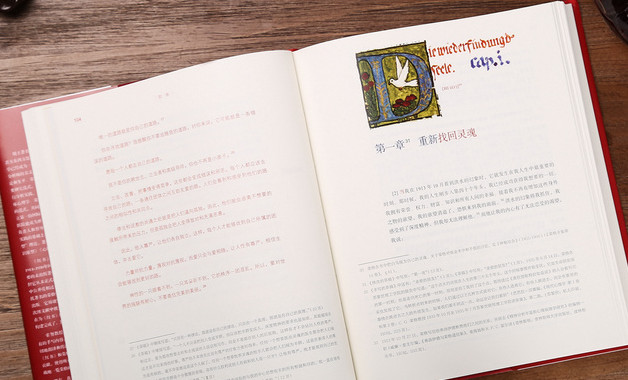
第1篇 小学小升初英语语法总结及习题名词复数规则
名词复数规则
1. 一般情况下,直接加-s,如:
book-books, bag-bags, cat-cats, bed-beds
2. 以s. x. sh. ch结尾,加-es,如:
bus-buses, box-boxes, brush-brushes, watch-watches
3. 以'辅音字母+y'结尾,变y为i, 再加-es,如:
family-families, strawberry-strawberries
4. 以'f或fe'结尾,变f或fe为v, 再加-es,如:
knife-knives
5. 不规则名词复数:
man-men
woman-women
policeman-policemen
policewoman-policewomen
mouse-mice
child-children
foot-feet
tooth-teeth
fish-fish
people-people
chinese-chinese
japanese-japanese
小练习:
写出下列各词的复数
i _________him _________this ___________her ______
watch _______child _______photo ________diary ______
day________ foot________ book_______ dress ________
tooth_______ sheep ______box_______ strawberry _____
thief _______yo-yo ______ peach______ sandwich ______
man______ woman_______ paper_______ juice___________
water________ milk________ rice__________ tea__________

第2篇 小学生英语语法祈使句总结
祈使句表示请求或命令别人做某事或不要做某事。
肯定式:
以动词原形开头(有时有please)
否定式:
don't+动词原形开头(有时有please)
如:
be careful!
please open your books.
let me have a try.
don’t open the door.
注意:
把祈使句改为否定句只需在动词前加don't即可。

第3篇 小学小升初英语语法代词总结及习题
人称代词和物主代词
1、人称代词主格和宾格的区别:主格通常位于句中第一个动词之前(有时候位于than 之后),宾格一般位于动词或介词之后。
2、物主代词形容词性与名词性的区别:形容词性用时后面一般要带上名词,名词性则单独使用,后面不带名词。
人称代词 物主代词
主格 宾格 形容词性 名词性
我 i me 我的 my mine
你,你们 you you 你的,你们的 your yours
他 he him 他的 his his
她 she her 她的 her hers
它 it it 它的 its its
我们 we us 我们的 our ours
他(她,它)们 they them 他(她,它)们的 their theirs
练习
一.用所给词的适当形式填空
1. that is not _________ kite. that kite is very small, but _________ is very big. ( i )
2. the dress is _________. give it to _________. ( she )
3. is this _________ watch? (you) no, it's not _________ . ( i )
4. _________ is my brother. _________ name is jack. look! those stamps are _________. ( he )
5. _________ dresses are red. (we) what colour are _________? ( you )
6. here are many dolls, which one is _________ ? ( she )
7. i can find my toy, but where's _________? ( you )
8. show _________ your kite, ok? (they)
9. i have a beautiful cat. _________name is mimi. these cakes are _________. ( it )
10. are these _________ tickets? no, _________ are not _________. _________ aren't here. ( they )
11. shall _________ have a look at that classroom? that is _________ classroom. ( we )
12. _________ is my aunt. do you know _________ job? _________ a nurse. ( she )
13. that is not _________ camera. _________is at home. ( he )
14. where are _________? i can't find _________. let's call _________ parents. ( they )
15. don't touch _________. _________ not a cat, _________ a tiger!
16. _________ sister is ill. please go and get _________. ( she )
17. _________ don't know her name. would you please tell _________. ( we )
18. so many dogs. let's count _________. ( they )
19. i have a lovely brother. _________ is only 3. i like _________ very much. ( he )
20. may i sit beside _________? ( you )
21. look at that desk. those book are on _________. ( it )
22.the girl behind _________ is our friend. (she )
二、用am, is, are 填空
1. i ______ a boy. ______ you a boy? no, i _____ not.
2. the girl______ jack's sister.
3. the dog _______ tall and fat.
4. the man with big eyes _______ a teacher.
5. ______ your brother in the classroom?
6. where _____ your mother? she ______ at home.
7. how _______ your father?
8. mike and liu tao ______ at school.
9. whose dress ______ this?
10. whose socks ______ they?
11. that ______ my red skirt.
12. who ______ i?
13. the jeans ______ on the desk.
14. here ______ a scarf for you.
15. here ______ some sweaters for you.
16. the black gloves ______ for su yang.
17. this pair of gloves ______ for yang ling.
18. the two cups of milk _____ for me.
19. some tea ______ in the glass.
20. gao shan's shirt _______ over there.
21. my sister's name ______nancy.
22. this ______ not wang fang's pencil.
23. ______ david and helen from england?
24. there ______ a girl in the room.
25. there ______ some apples on the tree.
26. _______ there any kites in the classroom?
27. _______ there any apple juice in the bottle?
28. there _______ some bread on the plate.
29. there _______ a boy, two girls, three men and ten women in the park.
30. you, he and i ______ from china.

第4篇 小学小升初英语代词语法总结及习题
人称代词和物主代词
1、人称代词主格和宾格的区别:主格通常位于句中第一个动词之前(有时候位于than 之后),宾格一般位于动词或介词之后。
2、物主代词形容词性与名词性的区别:形容词性用时后面一般要带上名词,名词性则单独使用,后面不带名词。
人称代词 物主代词
主格 宾格 形容词性 名词性
我 i me 我的 my mine
你,你们 you you 你的,你们的 your yours
他 he him 他的 his his
她 she her 她的 her hers
它 it it 它的 its its
我们 we us 我们的 our ours
他(她,它)们 they them 他(她,它)们的 their theirs
练习
一.用所给词的适当形式填空
1. that is not _________ kite. that kite is very small, but _________ is very big. ( i )
2. the dress is _________. give it to _________. ( she )
3. is this _________ watch? (you) no, it's not _________ . ( i )
4. _________ is my brother. _________ name is jack. look! those stamps are _________. ( he )
5. _________ dresses are red. (we) what colour are _________? ( you )
6. here are many dolls, which one is _________ ? ( she )
7. i can find my toy, but where's _________? ( you )
8. show _________ your kite, ok? (they)
9. i have a beautiful cat. _________name is mimi. these cakes are _________. ( it )
10. are these _________ tickets? no, _________ are not _________. _________ aren't here. ( they )
11. shall _________ have a look at that classroom? that is _________ classroom. ( we )
12. _________ is my aunt. do you know _________ job? _________ a nurse. ( she )
13. that is not _________ camera. _________is at home. ( he )
14. where are _________? i can't find _________. let's call _________ parents. ( they )
15. don't touch _________. _________ not a cat, _________ a tiger!
16. _________ sister is ill. please go and get _________. ( she )
17. _________ don't know her name. would you please tell _________. ( we )
18. so many dogs. let's count _________. ( they )
19. i have a lovely brother. _________ is only 3. i like _________ very much. ( he )
20. may i sit beside _________? ( you )
21. look at that desk. those book are on _________. ( it )
22.the girl behind _________ is our friend. (she )
二、用am, is, are 填空
1. i ______ a boy. ______ you a boy? no, i _____ not.
2. the girl______ jack's sister.
3. the dog _______ tall and fat.
4. the man with big eyes _______ a teacher.
5. ______ your brother in the classroom?
6. where _____ your mother? she ______ at home.
7. how _______ your father?
8. mike and liu tao ______ at school.
9. whose dress ______ this?
10. whose socks ______ they?
11. that ______ my red skirt.
12. who ______ i?
13. the jeans ______ on the desk.
14. here ______ a scarf for you.
15. here ______ some sweaters for you.
16. the black gloves ______ for su yang.
17. this pair of gloves ______ for yang ling.
18. the two cups of milk _____ for me.
19. some tea ______ in the glass.
20. gao shan's shirt _______ over there.
21. my sister's name ______nancy.
22. this ______ not wang fang's pencil.
23. ______ david and helen from england?
24. there ______ a girl in the room.
25. there ______ some apples on the tree.
26. _______ there any kites in the classroom?
27. _______ there any apple juice in the bottle?
28. there _______ some bread on the plate.
29. there _______ a boy, two girls, three men and ten women in the park.
30. you, he and i ______ from china.

第5篇 小学小升初英语语法总结及习题一般过去时
一般过去时 part b
过去时综合练习(1)
name ____________ no. ______ date __________
一、 用动词的适当形式填空
1. it ______ (be) ben's birthday last friday.
2. we all ______ (have) a good time last night.
3. he ________ (jump) high on last sports day.
4. helen ________ (milk) a cow on friday.
5. she likes ______ newspapers, but she ______ a book yesterday. (read)
6. he _______ football now, but they _______ basketball just now. (play)
7. jim's mother _________ (plant) trees just now.
8. _______ they ________ (sweep) the floor on sunday? no, they _____.
9. i _______ (watch) a cartoon on monday.
10. we ___________ (go) to school on sunday.
二、 中译英
1. 我们上周五看了一部电影。
_________________________________________________________
2. 他上个中秋节走亲访友了吗?是的。
_________________________________________________________
3. 你们上个儿童节做了什么?我们参观了动物园。
_________________________________________________________
4. 你上周在哪儿?在野营基地。
_________________________________________________________
过去时综合练习(2)
name ____________ no. ______ date __________
一、 用动词的适当形式填空
1. it _____ (be) the 2nd of november yesterday.
mr white ________ (go) to his office by car.
2. gao shan ________ (put) the book on his head a moment ago.
3. don't ______ the house. mum _______ it yesterday. (clean)
4. what ____ you ______ just now? i _______ some housework. (do)
5. they _________ (make) a kite a week ago.
6. i want to ______ apples. but my dad _______ all of them last month. (pick)
7. _______ he ______ the flowers this morning? yes, he _____. (water)
8. she ____ (be) a pretty girl. look, she _____ (do) chinese dances.
9. the students often _________ (draw) some pictures in the art room.
10.what ______ mike do on the farm? he ________ cows. (milk)
二、中译英
1. 他的朋友在照看他的弟弟。
_________________________________________________________
2. 去年端午节我们没去看了龙舟比赛。
_________________________________________________________
3. 他在音乐课上拉小提琴了吗?不,没有。
_________________________________________________________

第6篇 小学英语语法总结之祈使句
祈使句表示请求或命令别人做某事或不要做某事。
肯定式:
以动词原形开头(有时有please)
否定式:
don't+动词原形开头(有时有please)
如:
be careful!
please open your books.
let me have a try.
don’t open the door.
注意:
把祈使句改为否定句只需在动词前加don't即可。

第7篇 小学英语语法一般现在时总结
英语语法是英语知识中十分重要的环节,希望以下文章对您有所帮助!
英语语法一
英语中的时态一共有八种,它们是:一般现在时、现在进行时、一般过去时、现在完成时、一般将来时、过去进行时、过去完成时、过去将来时。
今天我们所要讲的就是第一种: 一般现在时——表示一般性,经常性的动作或一般性事实。
1、含有be动词的句子
he is a teacher.
the girl is very beautiful.
tim and jack are students.
★变疑问句将be动词移到句首
is he a teacher?
is the girl very beautiful?
are tim and jack students?
★变否定句在be动词后面加not
he is not a teacher.
the girl is not very beautiful.
tim and jack are not students.
★肯定回答及否定回答
yes, he is. / no, he is not.
yes, she is. / no, she is not.
yes, they are. / no, they are not.
英语语法二
2、不含有be动词的句子,即含有一般动词的句子。
(1)第三人称单数及单数名词
he likes books.
she likes him.
the dog likes bones.
★变疑问句在句首加does, 动词变为原型
does he like books?
does she like him?
does the dog like bones?
★变否定句在主语及动词之间加doesn't, 动词变为原型,原句中的动词不再有第三人称变化。
he doesn't like books.
she doesn't like him.
the dog doesn't like bones.
★肯定回答及否定回答:
yes, he does. / no, he doesn't.
yes, she does. / no, she doesn't
yes, it does. / no, it doesn't.
英语语法三
注意:第三人称单数形式一般在动词后面加s,不要和名词复数混淆,变否定句或疑问句时名词复数没有任何变化。
(2)其他人称及复数名词
i want to have a bath.
we have some meat.
the students like smart teachers.
★变疑问句在句首加do
do you want to have a bath?
do we have any meat?
do the students like smart teachers?
★变否定句在主语和动词之间加don't.
you don't want to have a bath.
we don't have any meat.
the students don't like smart teachers.
★肯定回答及否定回答
yes, i do. / no, i don't.
yes, we do. / no, we don't
yes, they do. / no, they don't.

第8篇 小学英语小升初语法总结:状语从句
什么是状语从句?
状语就是在一句话中,表达该句的时间,地点,方式,原因,条件等的成分。 那么状语从句就是用一个从句,表示状语。
小升初考试需要掌握的状从:
一般可分为九大类,分别表示时间、条件、结果、目的、让步、地点、原因、比较和方式。
难点:
a.掌握连词
b.注意时态,特别是时间,条件状语从句中的主将从现,主从时态一致原则
(1)时间状语从句
连词:when,while ,as soon as , not…until , before,after,since,etc.
注意:主将从现,主从时态一致
eg.:i will visit my good friend when i have time.
someone knocked at the door when/while i was sleeping.
he didn't go to bed until he finished his homework.
(2)地点状语从句
连词:where, wherever, anywhere, everywhere,nowhere
you can go anywhere you like.
(3)条件状语从句
连词: if,unless除非, as/so long as只要,once一旦
eg.:if it doesn't rain tomorrow,we will go there by bike.
you'll fail in the exam unless you work harder.
(4)结果状语从句:
连词: so taht,so+adj./adv.+that, such+n.+that
eg.: she was so angry that she couldn't speak.
she worked hard so that everything got ready by 6 o'clock.
(5)目的状语从句
连词: so that,in order that
eg.: please speak more slowly so that we can make full notes.
(6)让步状语从句
连词: although, though, as, even though/if, whether…or not, no matter+疑问词/疑问词-ever
(7)原因状语从句
连词:because, since/now that, as
语气的强弱:because,since次之,as最弱
(8)比较状语从句
连词:as…as, not as/so…as, …than
(9)方式状语从句
连词:as,as if/though好像

第9篇 小学小升初英语语法总结:状语从句
什么是状语从句?
状语就是在一句话中,表达该句的时间,地点,方式,原因,条件等的成分。 那么状语从句就是用一个从句,表示状语。
小升初考试需要掌握的状从:
一般可分为九大类,分别表示时间、条件、结果、目的、让步、地点、原因、比较和方式。
难点:
a.掌握连词
b.注意时态,特别是时间,条件状语从句中的主将从现,主从时态一致原则
(1)时间状语从句
连词:when,while ,as soon as , not…until , before,after,since,etc.
注意:主将从现,主从时态一致
eg.:i will visit my good friend when i have time.
someone knocked at the door when/while i was sleeping.
he didn't go to bed until he finished his homework.
(2)地点状语从句
连词:where, wherever, anywhere, everywhere,nowhere
you can go anywhere you like.
(3)条件状语从句
连词: if,unless除非, as/so long as只要,once一旦
eg.:if it doesn't rain tomorrow,we will go there by bike.
you'll fail in the exam unless you work harder.
(4)结果状语从句:
连词: so taht,so+adj./adv.+that, such+n.+that
eg.: she was so angry that she couldn't speak.
she worked hard so that everything got ready by 6 o'clock.
(5)目的状语从句
连词: so that,in order that
eg.: please speak more slowly so that we can make full notes.
(6)让步状语从句
连词: although, though, as, even though/if, whether…or not, no matter+疑问词/疑问词-ever
(7)原因状语从句
连词:because, since/now that, as
语气的强弱:because,since次之,as最弱
(8)比较状语从句
连词:as…as, not as/so…as, …than
(9)方式状语从句
连词:as,as if/though好像

第10篇 小学英语语法知识点总结:be动词的用法
be 动词的用法:
(1) am--was is --was are--were 口诀:我用am, 你用are, is用在他她它,复数全用are。
(2) 肯定和否定句 i am (not) from london. he is(not) a teacher. she is(not) in the dining room. my hair is(not) long. her eyes are(not) small.
(3) 一般疑问句 am i a chinese? yes, you are. no, you aren’t. are they american? yes, they are. no, they aren’t. is the cat fat? yes, it is. no, it isn’t.
there be 结构
肯定句: there is a …
there are …
一般疑问句:is there …? yes, there is./ no, there isn’t.
are there…? yes, there are. /no, there aren’t.
否定句: there isn’t …. there aren’t….

第11篇 小学英语语法总结:不定代词及不定副词
不定代词及不定副词
some, any, no, every
-thing: something, anything, nothing, everything
-one: someone, anyone, anything, everyone
-where: somewhere, anywhere, anywhere, everywhere
-body: somebody, anybody, nobody, everybody
例子:
1)i looked for my book everywhere, but i can’t find it anywhere.
2)if you want to go somewhere, if you want to be someone, you must wake up.
3)help! somebody? anybody?
4)you are really something. 你真了不起!(口语中常用 'something'来表示“真像回事儿”,“真行”的意思)
5)since everybody is here, let’s begin our class.
6)where did you go? i went nowhere.
7)nobody is at home.

第12篇 小学四年级下册英语语法知识点总结
一般过去时
1.一般过去时表示过去某个时间发生的动作或存在的状态,常和表示过去的时间状语连用。一般过去时也表示过去经常或反复发生的动作感谢。
2.be动词在一般过去时中的变化:
⑴am和is在一般过去时中变为was(was not=wasn’t)
⑵are在一般过去时中变为were(were not=weren’t)
⑶带有was或were的句子,其否定、疑问的变化和is, am, are一样,即否定句在was或were后加not,一般疑问句把was或were调到句首。
3.句中没有be动词的一般过去时的句子
否定句:didn’t +动词原形,如:jim didn’t go home yesterday.
一般疑问句:在句首加did,句子中的动词过去式变回原形。
如:did jim go home yesterday?
特殊疑问句:
⑴疑问词+did+主语+动词原形?
如:what did jim do yesterday?
⑵疑问词当主语时:疑问词+动词过去式?
如:who went to home yesterday?

第13篇 小学英语语法句型转换总结
一、肯定句改否定句的方法 :
1、 在be动词后加not。如:is not , are not , am not, was not, were not;
2、 在can,should, will等后加not。如:cannot, should not, will not;
3、 上述都没有的,在动词前加助动词否定形式don’t/doesn’t/didn’t。
4、 some 改成any。
如: i am a girl. → i am not a girl.
you are a student. →you are not a student.
→you aren’t a student.
this is tom’s bag, → this is not tom’s bag.
→ this isn’t tom’s bag.
答题方法是;否定词not在be后边。
二、肯定句改一般疑问句的方法:
1、 把be动词放在句首,剩下的照抄,(some 改成any,i改成you,my改成your,)句点改成问号。
2、 把can,shall, will等放到句首,剩下的照抄,(some 改成any,i改成you,my改成your,)句点改成问号。
3、 上述都没有的,在句首请助动词do/does/did帮忙,剩下的照抄,(some 改成any,i改成you,my改成your,)句点改成问号。
注意:句首的第一个字母要大写,句尾标点应为“?”。
如:
i am in class 6. →are you in class 6?
you are from america. →are you from america?
it is an orange. →is it an orange?
答题方法是:要想提问,be提前,句末“?”别忘了。
4、 就一般疑问句回答
一般疑问句有两种回答,即:肯定回答和否定回答。其中,肯定回答用yes,否定回答用no。 语句顺序为:yes + 主语 + am /is/ are/was/were.|can.|do/does/did|; no + 主语+ am not/ isn’t/ aren’t/wasn't/weren't.|can't.|don't/doesn't/didn't|.。如:
—are you an english teacher?→yes, i am. /no, i am not.
—is that a bird? →yes, it is./ no, it isn’t.

第14篇 小学六年级英语语法总结
词类
1、 动词:行为动词、be动词、情态动词。
(1)行为动词
原形、+s/es、+ed、+ing,具体判断方法如下:
(2)be动词
a、am--was is --was are--were 口诀:我用am, 你用are, is用在他她它,所有复数全用are。
b、肯定和否定句
i am (not) from london. he /she is(not) a teacher. my hair is(not) long. her
eyes are(not) small.
c、 一般疑问句 am i …? yes, you are. no, you aren't. are you/they…? yes,we/ they are.
no,we/ they aren't. is the cat fat? yes, it is. no, it isn't.
is、am、are为一类,一般用于一般现在时、现在进行时和一般将来时中。
was和were为另一类,一般用于一般过去时。
(3)情态动词
can、must、should、would、may。情态动词后动词总是用原形。(不受其他任何条件影响)
2、 名词
这里强调两点:不可数名词都默认为单数,所以总是用is或者was。
如何加后缀:
a.一般情况下,直接加-s,如:book-books, bag-bags, cat-cats, bed-beds
b.以s. x. sh. ch结尾,加-es,如:bus-buses, box-boxes, brush-brushes, watch-watches
c.以'辅音字母+y'结尾,变y为i, 再加-es,如:family-families, strawberry-strawberries
d.以'f或fe'结尾,变f或fe为v, 再加-es,如:knife-knives
e.不规则名词复数: man-men, woman-women, policeman-policemen, policewoman-policewomen,
mouse-mice child-children foot-feet ,.tooth-teeth fish-fish, people-people,
chinese-chinese, japanese-japanese
3、 形容词(包括副词
形容词表示某一事物或的特征,副词表示某一动作的特征。
形容词和副词只有两种形式:原形和+er。
未作比较的情况下就用原形,比较时就+er。
两个重要特征:as……as中间一定用原形,有than的时候一定+er。
4、 人称代词和物主代词
人称代词物主代词
单数复数单数复数
主格宾格主格宾格形容词性(短)名词性(长)形容词性(短)名词性(长)
第一人称imeweusmymineourours
第二人称youyouyouyouyouryoursyouryours
第三人称hehimtheythemhishistheirtheirs
sheherherhers
itititsits
人称代词:
有主格和宾格之分。
一般动词前用主格,动词后用宾格。
物主代词:
有两类:形容词性物主代词(短的)和名词性物主代词(长的)
一般看后面有没有名词,如有,就用形容词性物主代词(短的);如无,就用名词性物主代词(长的)。
5、 数量词
我们学过两类:基数词和序数词。基数用于表示数量多少,而基数词用于表示次序,常在日期中出现。序数词的前面一般都加the。
6、冠词
有a、an、the。a和an的区别:an用于元音音素(一般就是元音字母aeiou)前,a用于辅音音素前。
否定句
be动词(am、is、are、was、were)+not、
情态动词(can、must、should)+ not、
助动词(do、does、did) + not
如何将一个肯定的陈述句改为否定句:
1、看句中有无be动词,如有,直接在be动词后+ not。
2、看句中有无情态动词,如有,直接在情态动词后+ not。
3、如上述二者都没有,就应用助动词+ not。分四个步骤:
(1)肯定陈述句中本来是没有助动词的,要加上去,位置在主语(某人或某物)后,动词前。
(2)确定助动词用do、does还是did,根据句中动词,动词是原形的助动词就用do,动词是第三人称单数的助动词就用does,动词用过去式的助动词就有did
(3)在助动词后加not。
(4)原句中动词假如发生变化就要恢复成原形。
强调一点,有some的要考虑是否要用any。

第15篇 小学英语语法总结大全:感叹句
感叹句:
1) what +名词+主语+谓语
what a beautiful girl she is!
what tall buildings they are!
2) how +形容词+主语+谓语
how beautiful the girl is!
how tall the buildings are!
? 在口语中,感叹句的主语和谓语常常省略:
what a nice present!(省略it is)
how disappointed!(省略she is或其它可作本句主、谓的词语)

















